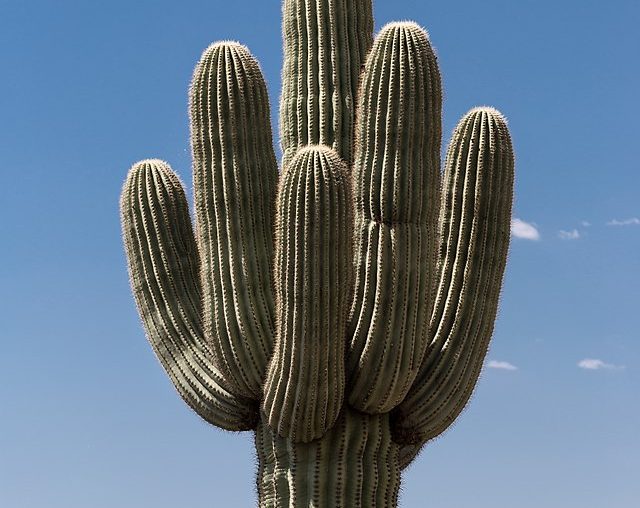It is harvest time for Arizona’s iconic saguaro cactus and therefore a brand new year for the native American community of Tohono O’odham.
According to the Associated Press on July 2, 2025, the harvest began in June and will culminate as fruits ripen through early July.
So culturally important is the locally-termed bahidaj cactus that its harvest must stop for good if rain falls in-between.
Ideally, after picking the fruits using long cross-hatch poles made of ribbed cacti poles, the new year starts.
What is this Cacti?
Saguaro cactus (Carnegiea gigantea) is a rarity in the wilds of Arizona’s Sonoran Desert, near Mexico.
Reaching over 30-foot tall, it dominates the southern borderlands of Arizona that includes the Saguaro National Park, near Tucson.
Like all evergreen desert plants like alfalfa that thrive in the southern state, the saguaro subsists on bone dry land.
This is despite reports showing that habitats near the capital Phoenix have accelerated their annual drying rate to over 2% since 2020.
Amid the heat, the cacti offer biodiversity by thriving in the shade of ironwood trees. They in turn get pollinated by bats while birds spread the mature fruits, each with 2,000 seeds.
Thanks to the peculiarity of growing new arms after they reach 50 years till they die at 175 years, saguaro survive for long.
The state of Arizona has recognised this longevity and versatility by turning the saguaro blossom into the state flower. And as the statistics below show, the plant also boasts economic potential at the local level.
Arizona’s Saguaro Cactus Statistics
The ‘saguaro’ cacti (Carnegiea gigantea), a Hispanization of the O’odham tribe’s word ‘Ha’san,’ is one of the wonders of nature in southern Arizona. In 2023, there were 2 million saguaro plants in Arizona across 92,000 acres of state-protected land on the Saguaro National Park. Thanks to the protection efforts, this extensive acreage perennially displays the saguaro blossom as the official state flower and fosters tourism. Sightseers pose with the shrub’s over 50 arms per older plant and trunk ribs that number 12 to 30 to each plant. The sightseeing somewhat helps nurture the community economically.
What are the edible uses of the cactus?
As an edible fruit, the saguaro offers ceremonial food or wine while its seeds make a syrup that is high in protein. For many years, the Tohono O’odham or Pima Nation used to set camps at harvest time to pluck the protein-rich fruits. They also turned them into a gruel for making maternity medicine as well as a syrupy wine. Into the 2020s, the people of the area were still making wine from the crushed fruit.
What is the economic and biodiversity potential of saguaro?
With an average height of 30 feet verging on 60 feet, a single giant saguaro shrub carries a weight above 4,000 pounds. This means it can produce enough fruits for making wine or pounding into food, each with 2,000 seeds. The fruit measures between 25 and 45 mm across while the black seeds span 0.75 mm wide. Besides, the plants continue to benefit the desert environment after they die for their ribbed tissue conserves carbon that nourishes the desert. It is no wonder then that the Sonoran is the greenest desert in the United States.
